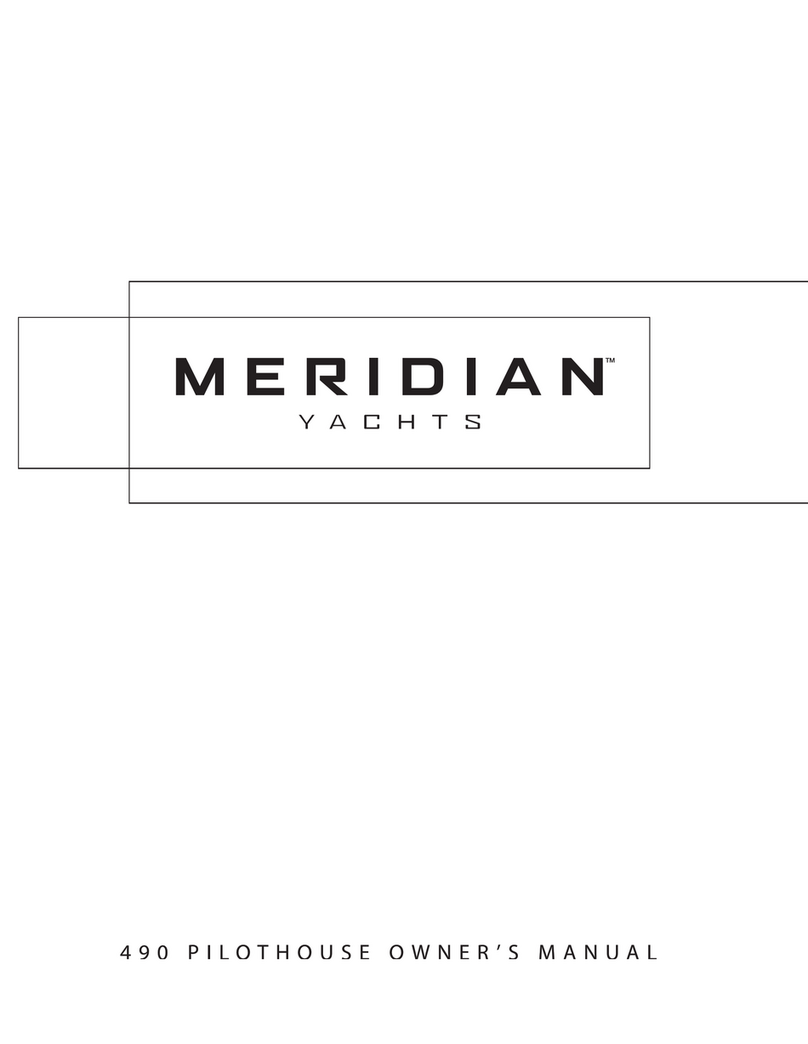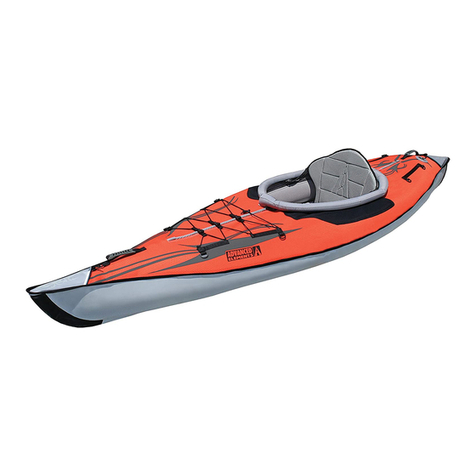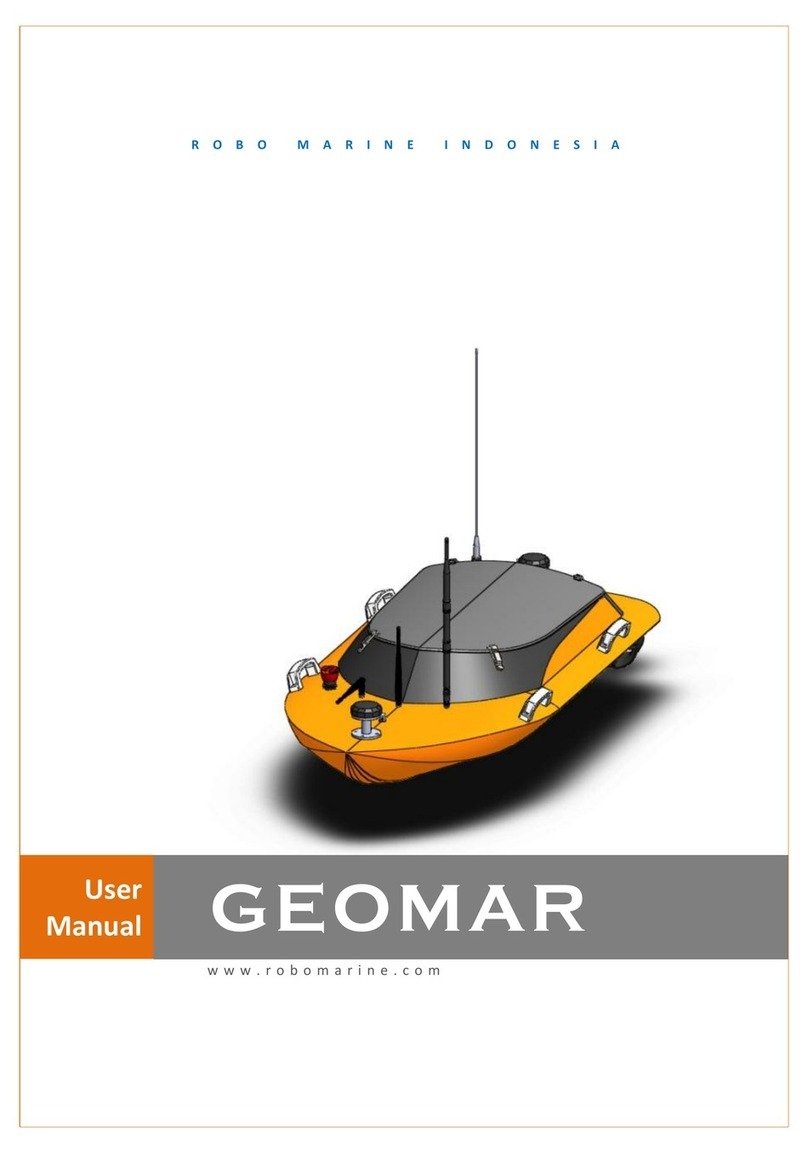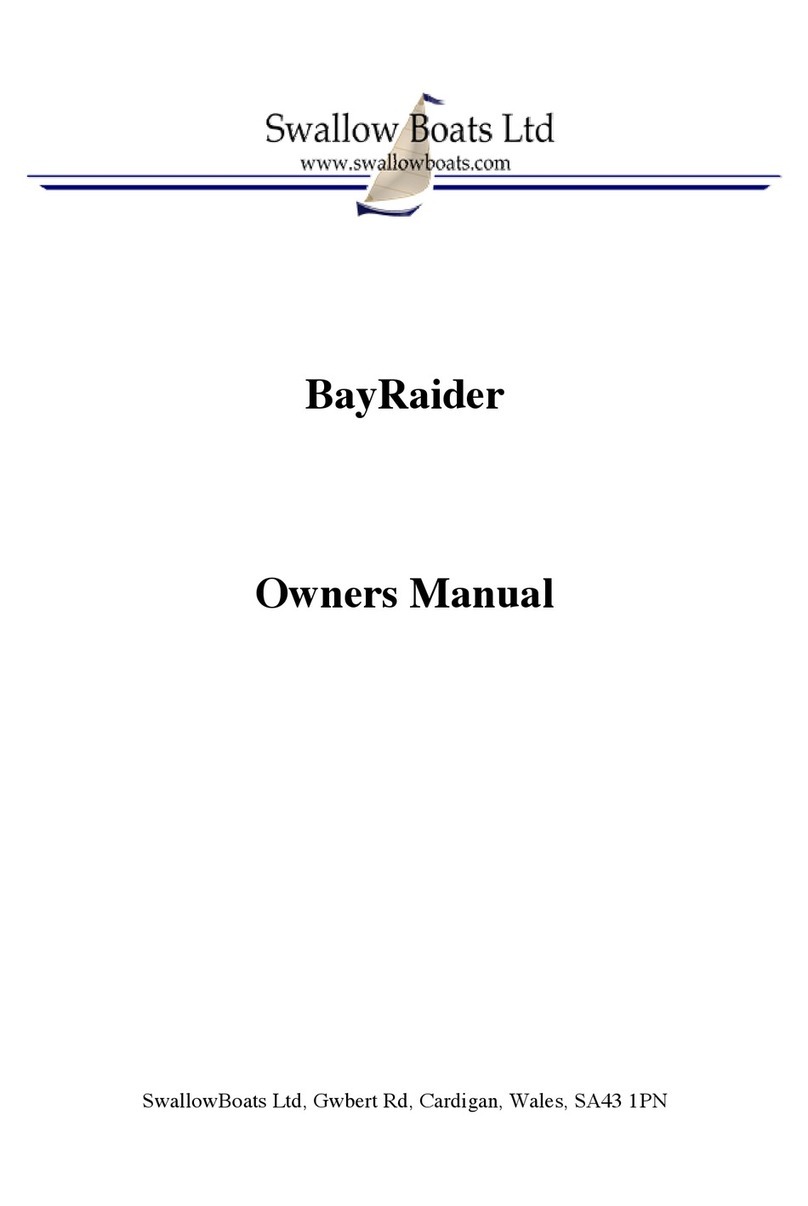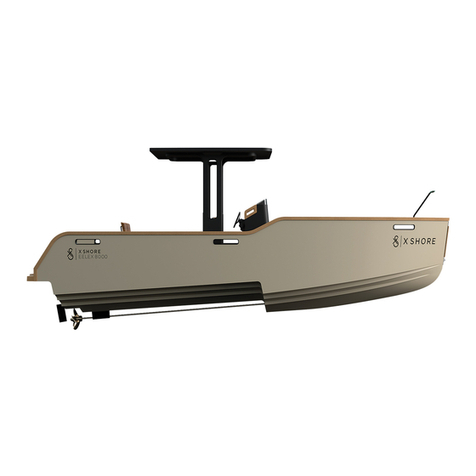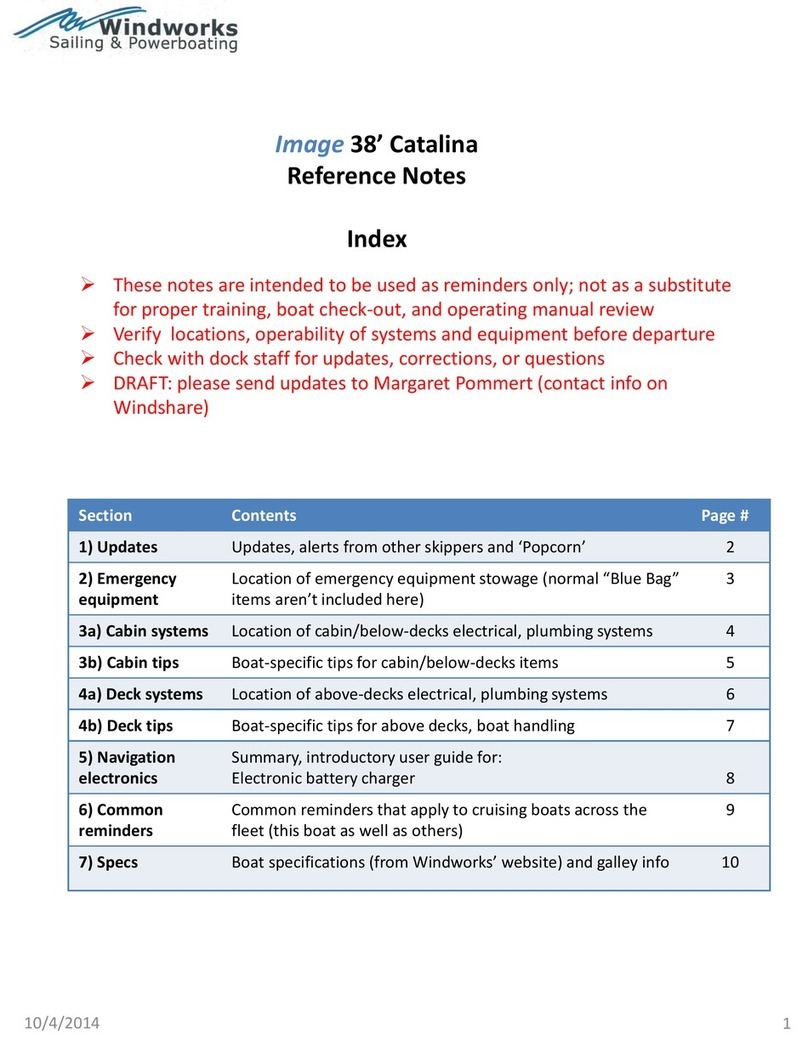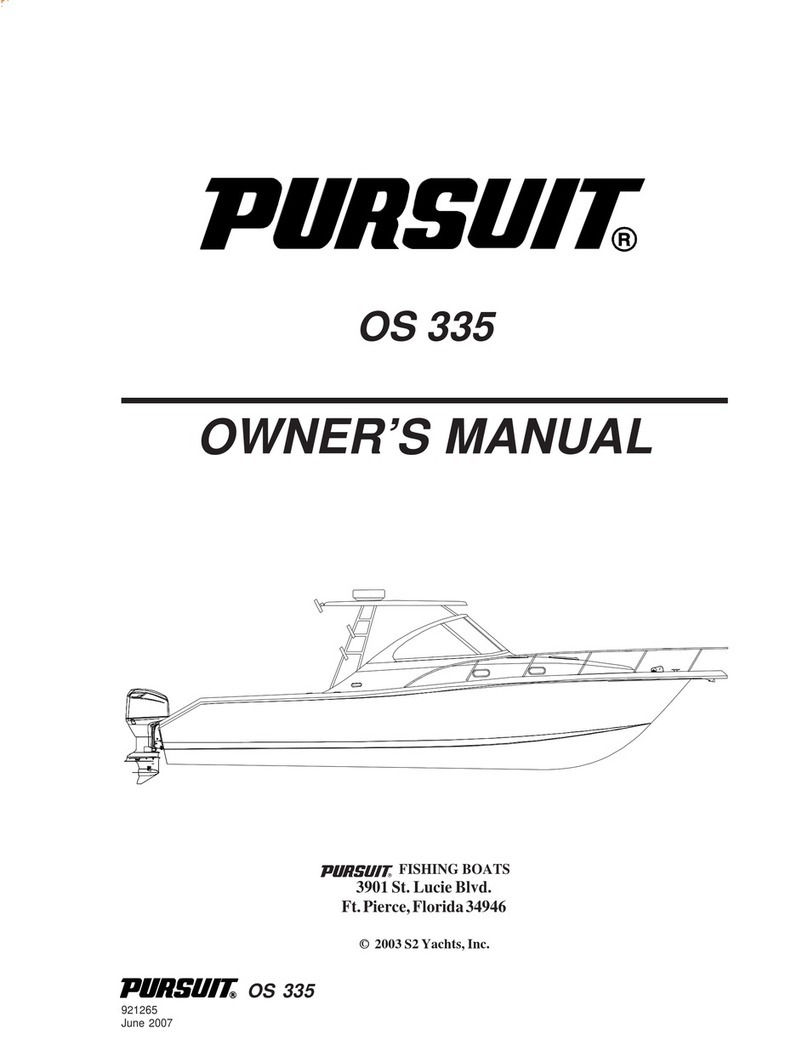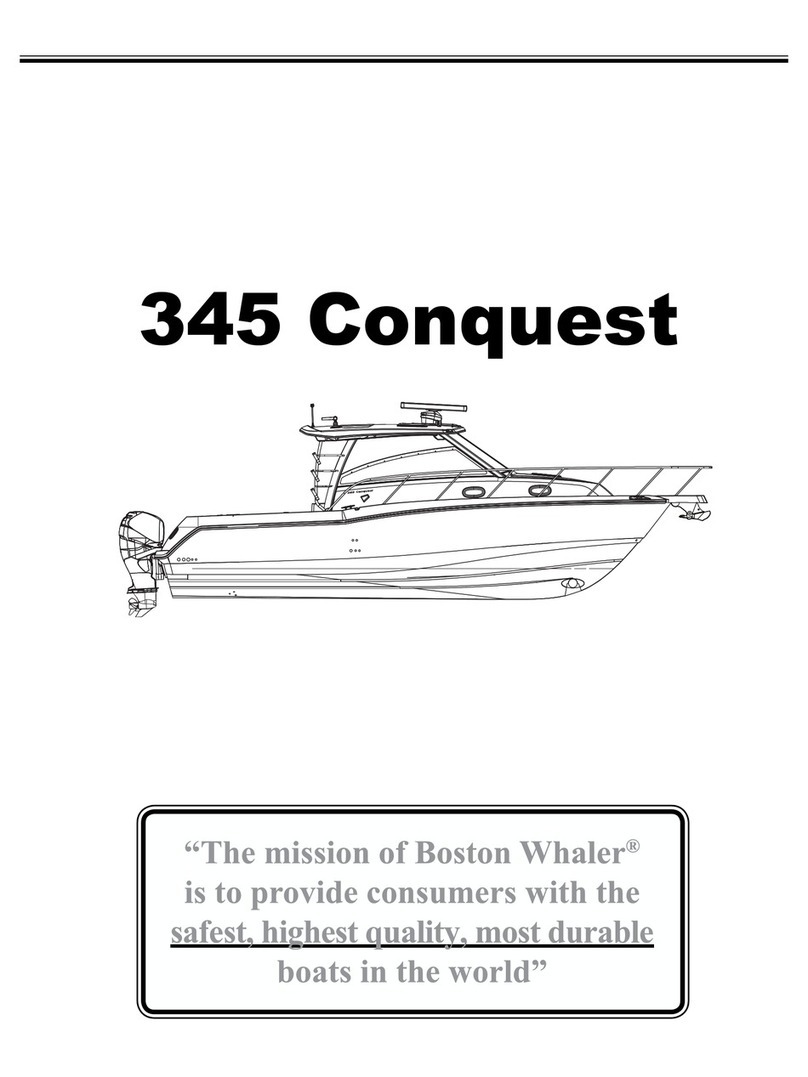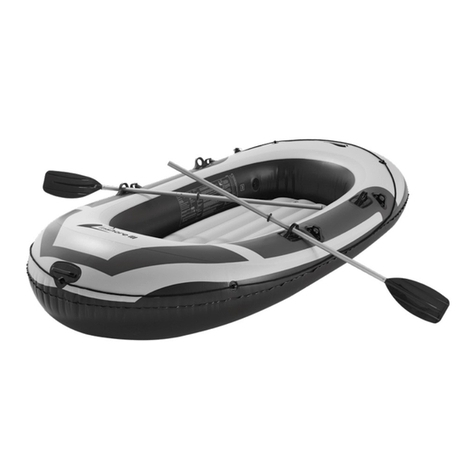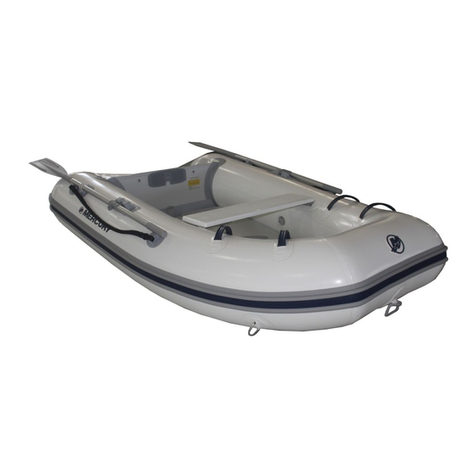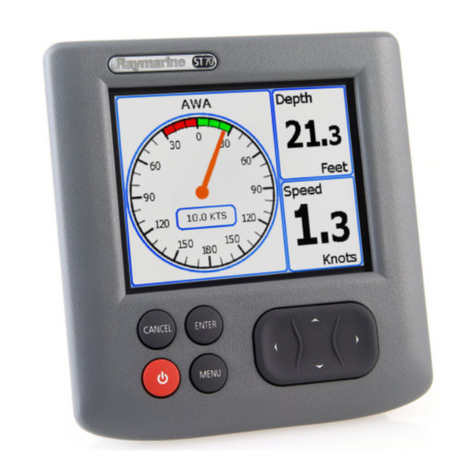
www.costway.com
LEAK DETECTION AND REPAIR
Air Leak Detecon
If the kayak is losing air pressure, not caused by colder temperatures,
check the kayak for leaks, starting with the valves. Valve leakage is
rare, but if you do find a leak we can send you a replacement valve. To
locate a leak , we recommend mixing soap and water in a spray bottle,
and spraying around the valve. If you see bubbles forming, check the
valve seating and base and be sure the valve insert has been screwed
tight. If you continue to have problems, it’s probably time to order a
new valve. Replacement of the whole valve can be done with a simple
tool that comes with the replacement valve.
If the kayak is losing air and the valves are good, it probably has a
small puncture. Small punctures can be repaired easily and
permanently. Spray around the kayak until air bubbles become visible
and mark the position of the leak. If you do not find air bubbles, inflate
the kayak to maximum air pressure and try to listen to find the leak. If
you can narrow the area down, return to use the spray bottle to
identify the source of the leak.
Repair Kit
Punctures less than 1/8” in size can be repaired simply without a
patch. Deflate your kayak, then clean and dry the area to be repaired.
Apply a small drop of glue to cover the puncture, and let it dry 12
hours.
If your kayak needs repair,use the patches in the repair kit and follow
these steps:
●Deflate the kayak completely, lay it flat and wait for it to dry.
●Cut a patch that is 2 inches larger than the tear/rip all the way
around.
●Use alcohol to clean the repair area.
09

